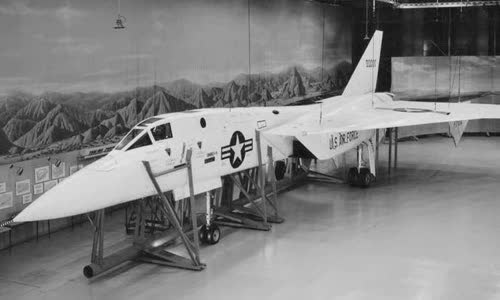America's XF-108 superjuro is among the most modern fighters at the beginning of the Cold War, but never leaves the ground.
The 1950s witnessed significantly changes in the military aviation industry, especially the development of jet engines to replace the propeller engine.

Photo: USAF
In July 1955, the US Air Force passed LRI-X project with the goal of manufacturing a high-performance long-range interceptor fighter.
Model of ground testing of XF-108 fighter.
In the bidding companies, North American Aviation Group (NAA), the manufacturer of P-51 Mustang fighters was very successful during World War II, proposed 27 meters XF-108 Rapier fighter project
XF-108 fighters will support XB-70 Valkyrie mechanical bombers which are capable of reaching speed of over 3,700 km / h (Mach 3).
NAA equips XF-108 Radar Hughes AN / ASG-18 with the search system and infrared monitoring to maximize the ability to detect targets at a long distance with high accuracy.
XF-108 reaches a large speed thanks to equipped with two J93-Ge-3ar jet engines with a total thrust over 26 tons.
However, XF-108 fighters have no chance to take off.
At the end of 1959, the XF-108 program was destroyed when it was new to the modeling phase.
Some technologies and experiences in the XF-108 superjitting design are applied by NAA Group for super bar bombing on the flagship A-5 / RA-5 Vigilante.



 Jon Lavigne
Jon Lavigne







